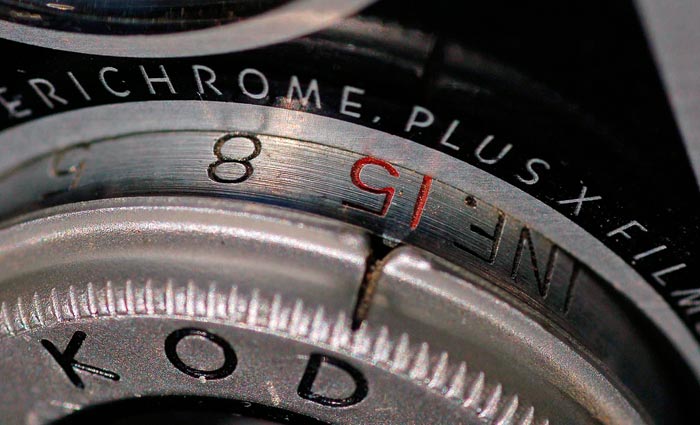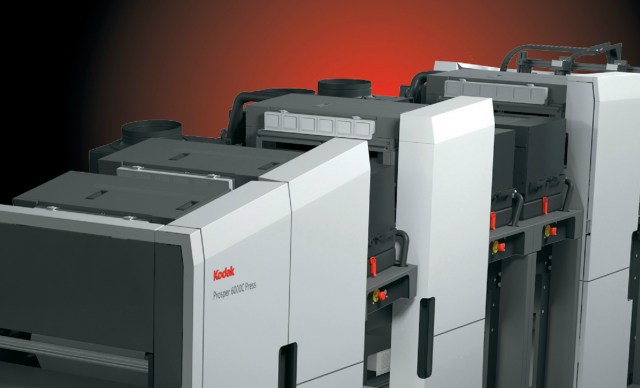
Kodak never does anything the easy way. Last month’s Chapter 11 filing – in the dead of night – was a case in point. The announcement had been anticipated since last September; the lack of surprise was palpable, suggesting Kodak needn’t have bothered springing the news at quite such an awkward time. But such is the Kodak way and Chris Payne, vice-president of business-to-business marketing at the Rochester, US-headquartered print giant, was on hand – regardless of the ungodly hour – to clarify that rumours of the once great manufacturer’s demise were greatly exaggerated.
The point Payne and Kodak want to emphasise is that Kodak is not Manroland. That is to say, Chapter 11 is not equivalent to the process Manroland is going through, which is an insolvent restructuring more akin to the US Chapter 7. The key difference is time. Whereas Manroland was put in the control of a court-appointed administrator who was handed a tight schedule of around two months to come up with a plan to dispose of the firm, Kodak has secured sufficient financing to continue into 2013 and will continue to be managed by its current board, aided by a chief restructuring officer.
Much of the debate since Kodak’s filing has focused on the reasons for this predicament. Various theories have been thrown up. Some truth can be found in all of them, but more important than the ‘why’ is the ‘what next’, both for Kodak and the print industry. Overseas subsidiaries (such as Australia) were not included in the Chapter 11 filing, and Payne stresses that “from a practical point of view” they won’t be affected and nor will Kodak customers.
Kodak will no doubt do everything in its power to ensure that the latter holds true; however, the former is an obvious oversimplification. Although the Chapter 11 filing only affects the parent company and its US-based subsidiaries, any restructuring of a global organisation is clearly going to have a global impact.
Kodak’s reasons for entering Chapter 11 are to “bolster liquidity in the US and abroad, monetise non-strategic intellectual property, fairly resolve legacy liabilities and enable the company to focus on its most valuable business lines”. Those business lines are primarily what makes up Kodak’s graphic communications business, as outlined by Payne: “All of the activities that we’ve announced are in support of the overall direction that we’re headed in. We will continue to invest in Prosper, we will continue to invest in packaging, in our workflow solutions, and obviously everything we do in CTP and digital printing and offset plates.
“What this enables really is the capability to use the funds we’ve got on the investment businesses, and I actually believe for GCG this is good news because it’s where our focus is going to be moving forward with the company.”
Tight focus
Payne adds that the company’s commitment to Drupa is unaltered and there are no plans to cut costs by reducing its presence in terms of equipment or staff. “We’re going to be there with all of the products and services you would expect: advances in our inkjet portfolio; advances in our packaging portfolio, in workflow and solutions as well as all of the products that you know and love us for, like the Trillian plates and our CTP devices.
“We’ll be there in full force. We expect to continue with our plans and I think that’s a good example of how we’re going to continue to operate the business normally and focus on where our future is. We don’t plan on scaling back anything from our current plan.”
The message from Perez and the board, who have been at pains to point to the number of large US companies, from airlines to car manufacturers, who have successfully gone through Chapter 11 since 2008, has – unsurprisingly – been upbeat. They’ve secured the liquidity to keep operating and they’ve got at least a year to sort the business out. But, consider the disruption of Drupa this year, of a potential confrontation with staff over the necessary reforms and the various daily dramas that seem typical of Kodak (the company hasn’t been in Chapter 11 a week at the time of writing and it’s already on its second chief restructuring officer) and suddenly a year doesn’t seem like that long a time. Kodak has breathing space and a plan it badly needs to work, but the road ahead is far from easy and it’s still anyone’s guess what the final destination will be.
Kodak timeline
1879: George Eastman invents emulsion-coating unit that enables mass-production of photographic dry plates
1880: Commercial production begins
1888: The Kodak name is born and the first Kodak camera goes on sale
1900: The first Brownie camera goes on sale for $1
1912: British scientist Dr CE Kenneth Mees recruited to set up research laboratory in Rochester
1929: Introduces first motion picture film designed for the new “talkies”
1931: Introduces Kodalith film and plates, replacing collodion wet plates
1932: George Eastman, suffering from a degenerative illness, commits suicide aged 77. He leaves a note saying: “My friends, my work is done. Why wait?”
1935: Kodachrome film launched
1953: Introduced Kodak Photo Resist for making litho printing plates
1960: Kodak Estar polyester graphic arts film base launched for extra dimensional stability
1962: US sales exceed $1bn for first time.
1965: First develops Super 8 format
1966: Number of staff tops 100,000
1969: A special stereo camera made by Kodak accompanied astronauts Aldrin and Armstrong to the moon
1975: Kodak invents world’s first digital camera. The prototype was the size of a toaster and captured black-and-white images at a resolution of 10,000 pixels (0.01 megapixels)
1980: Celebrates 100th anniversary
1981: Sales exceed $10bn. Acquires newspaper systems specialist Atex
1990: Announces Photo CD system and proposes worldwide colour definition standard
1995: Contracts Danka to sell and service Kodak high-volume copiers
1996: Advanced Photo System launched
1997: Sells office imaging division to Danka. Forms Kodak Polychrome Graphics, a joint venture with Sun Chemical to supply film, plates, CTP systems and other pre-press products
1998: Buys Imation. Forms NexPress joint venture with Heidelberg
1999: Sells digital printer and copier/duplicator operations to Heidelberg, expansion of NexPress. Kodak and Sanyo show first OLED display based on Kodak’s patented organic light-emitting diode technology.
2000: NexPress 2100 unveiled at Drupa, described as having “the power of a press with the flexibility of a printer”
2001: Kodak Easyshare digital camera system launched
2002: Acquires wide-format printer manufacturer Encad
2003: Former HP executive Antonio Perez joins as president and chief operating officer. Unveils strategy to accelerate growth
2004: Becomes sole owner of NexPress after paying Heidelberg just $1 for its 50% stake. Buys Scitex Digital Printing, which becomes Kodak Versamark. Versamark previews ‘next-generation’ Stream inkjet at Drupa
2005: Takes sole ownership of Kodak Polychrome Graphics. Acquires Creo. Antonio Perez becomes CEO
2007: Kodak Traceless anti-counterfeiting system, based on technology acquired with Creo, launched. Installs 10,000th platesetter. Introduces Flexcel NX digital flexo system
2008: Demonstrates Stream inkjet technology at Drupa
2009: Stream comes to market under Prosper brand name. Sells OLED technology to LG
2010: Prosper 5000 colour inkjet press shown at Ipex. New Trillian SP thermal plates introduced
2011: Sells image sensor and gelatine businesses, and parts of microfilm ops. Expands flexo portfolio with acquisition of Tokyo Ohka Kogyo relief plate business. Perez admits Kodak didn’t fully understand all of the complexities involved in putting its Prosper inkjet presses into live production and takes a multimillion dollar hit as a result. Starts process of selling off some patents amid unrest about liquidity. Issues statement denying it will file for bankruptcy. In dispute with Collins, which makes ink for Versamark range
2012: Files for Chapter 11 bankruptcy protection
Comment below to have your say on this story.
If you have a news story or tip-off, get in touch at editorial@sprinter.com.au.
Sign up to the Sprinter newsletter



